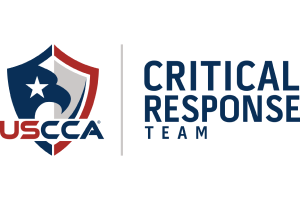Representation.
New York Penal Law § 135.65 – Coercion in the First Degree
Highly Experienced NY Criminal Defense Attorneys Defending Clients Facing Felony Charges
Coercion in the First Degree is the most serious coercion offense, prohibiting anyone from committing Coercion in the Third Degree by placing the victim in fear of physical injury or property damage. The offense also covers situations in which the defendant compels the victim to commit a felony, injure another person, or violate their duty as a public servant. Coercion in the First Degree is a Class D felony.
The Elements of Coercion in the First Degree
Before a judge or jury can convict you of Coercion in the First Degree, the prosecution must prove each element of the offense beyond a reasonable doubt. The elements of Coercion in the First Degree are:
- The defendant either,
- compelled or induced another person to engage in conduct that they had a legal right to refrain from engaging in; or
- compelled or induced another person to refrain from engaging in conduct that they had a legal right to engage in; and
- The defendant did so by instilling fear that, if the defendant’s demands were not met, the defendant would,
- Cause physical injury to the victim;
- Cause damage to property;
- Commit or attempt to commit a felony offense;
- Cause or attempt to cause physical injury to a third person; or
- Violate their duty as a public servant.
Notably, the person receiving the defendant’s commands must carry out the demanded action for the offense to occur.
Examples of Coercion in the First Degree
Examples of Coercion in the First Degree include the following:
- A defendant threatens to hurt a government official’s child unless the official exercises their discretion as directed by the defendant.
- A defendant threatens to burn down a store unless the store owner pays the defendant a sum of money.
Related Offenses to NY Penal Law § 135.65
Often, prosecutors bring Coercion in the First Degree charges along with one or more of the following:
- Coercion in the Second Degree – N.Y. Penal Law § 135.61
- Coercion in the First Degree – N.Y. Penal Law § 135.65
- Corrupt Use of Position or Authority – N.Y. Penal Law § 200.56
- Unlawful Collection Practices – N.Y. Penal Law § 190.50
- Bribery in the Third Degree – N.Y. Penal Law § 200.00
- Bribery in the Second Degree – N.Y. Penal Law § 200.03
- Bribery in the First Degree – N.Y. Penal Law § 200.04
What Are the Defenses to Coercion in the First Degree?
There are several defenses to Coercion in the First Degree that can either reduce your sentencing exposure or result in the prosecution withdrawing the case against you or the jury returning a “not guilty” verdict. The most common defenses include the following:
- The other person was legally obligated to engage in the conduct you requested they engage in;
- Your actions did not rise to the level of compelling the other person to succumb to your request; or
- The other person did not carry out the conduct you requested.
Of course, depending on the circumstances, there are other defenses to Coercion in the First Degree. An experienced New York criminal defense lawyer can help you determine what defenses will apply in your specific case.
What Are the Penalties for Violating NY Penal Law § 135.65?
Coercion in the First Degree is a Class D felony. In New York, Class D felonies carry a maximum sentence of up to seven years in jail and a fine of up to $5,000 or twice the amount of financial gain you derived from the offense.
Speak with an Experienced New York Criminal Defense Lawyer About Your Case Today
If you are facing coercion charges in New York, it is essential that you have an experienced lawyer by your side at every step of the way. At Tilem & Associates, P.C., we have assembled a dedicated team of attorneys who have specific experience handling all types of coercion and bribery offenses. We are immediately available to meet with you to get started working on a compelling defense to the charges you face. To learn more, and to schedule a free consultation today, call 877-377-8666. You can also reach us through our online contact form.

















